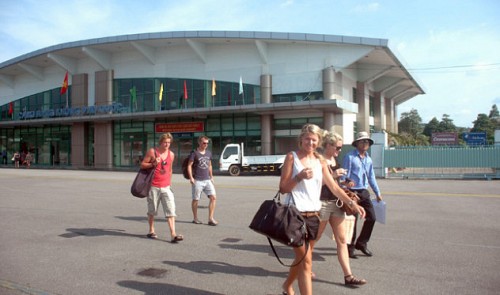Vietnamese logistics sector needs big revamp after landmark trade deal conclusion
Vietnamese logistics sector needs big revamp after landmark trade deal conclusion
Vietnam’s logistics industry has many opportunities to develop and engage more deeply in the world’s with the future signing of the Trans-Pacific Partnership (TPP) trade agreement, to which the Southeast Asian country is party.

The TPP deal, which aims to liberalize commerce in 40 percent of the global economy, was reached earlier this month, pending approval by lawmakers in 12 participating nations.
These countries include Australia, Brunei, Canada, Chile, Japan, Malaysia, Mexico, New Zealand, Peru, Singapore, the U.S., and Vietnam.
Logistics is a potential sector which requires coordination between state agencies and local businesses, as the bigger share of the pie is in the hands of foreign-invested firms.
With the annual growth rate of 12 percent and an export and import turnover topping US$623 billion by 2020, according to the World Bank’s forecast, Vietnamese logistics companies need to improve service quality to increase competitiveness, especially in the face of global and regional economic integration.
Smaller scale, higher cost
As an important link of the economy, logistics activities help goods to get from producers to end-users, while ensuring timely delivery of materials, components and spare parts from suppliers to producers for production.
According to statistics of the Vietnam Logistics Association (VLA), the Southeast Asian nation currently has over 1,300 active logistics companies, including 25 foreign-invested enterprises.
However, the foreign players now account for 80 percent of the market share, while thousands of local firms make up the rest.
Do Xuan Quang, VLA chairman, told a seminar in Hanoi on Tuesday last week that total logistics costs, including the expenses of transport, storage, warehousing, customs procedures and other paperwork, reach about $37-40 billion annually.
"However, $30-35 billion of the total is paid to foreign firms, which means the most delicious part of the pie is in the hands of foreign companies," news website VnEconomy quoted Quang as saying.
As the majority of domestic enterprises operating in logistics are small-scale firms, due to their limited financial and management capacity, they are mostly providing simple services.
In addition, the insufficient financial capability also bars them from developing a system of specialized logistics facilities, such as warehouses and ports, and applying the latest advancement in information and transportation technology to their operations.
In contrast, bigger foreign-invested firms in Vietnam are offering an integrated package of logistics services which include many processes, from cargo delivery to other value-added services like handling customs formalities, warehousing, packaging and distributing.
Several experts have pointed out some main factors that also hinder the development of the logistics industry in Vietnam, including underdeveloped transport infrastructure that fails to keep pace with the speed of industrialization, overlapping customs procedures, and the construction of unplanned and incoherent ports and supporting centers.
All of these have resulted in logistics cost in Vietnam being among the world’s highest, at 25 percent of GDP, which in turn hinders the cost competitiveness of Vietnamese companies.
The respective logistics cost in the U.S., Europe, and the world is about nine percent, 13 percent, and 15 percent.
Private sector participation
The country’s drive to channel private investment into transport infrastructure has recently helped speed up the privatization of state firms, which previously handled almost all important transport projects, and may have a good impact on the sector in the future, experts said at the seminar in Hanoi.
Many private investors at home and abroad have expressed their ambitions to spend millions of dollars owning critical transport infrastructures, according to the Ministry of Transport.
Among them are two giants, Hanoi-based T&T Group and Ho Chi Minh Stock Exchange-listed VinGroup, which have constantly suggested acquiring and running many airports, seaports and railways in Vietnam.
After owning the right to manage the Quang Ninh port property, T&T has proposed that the Ministry of Transport allow it to take over the Hanoi railway station.
Meanwhile, the race to win the right to operate the Phu Quoc airport on the eponymous island is getting tighter with three private firms participating, including T&T, Vingroup and retailer IPP Group.
The upgrade of Cam Ranh Airport in the south-central province of Khanh Hoa has over 12 investors bidding for it.
Both VinGroup and T&T have also paid their attention to investing in the main railway stations in Hanoi, Ho Chi Minh City and Da Nang.
According to the Ministry of Transport, up to 17 rail projects are waiting for the participation of the private sector in an effort to rejuvenate one of the key road transport sectors of the country.


















